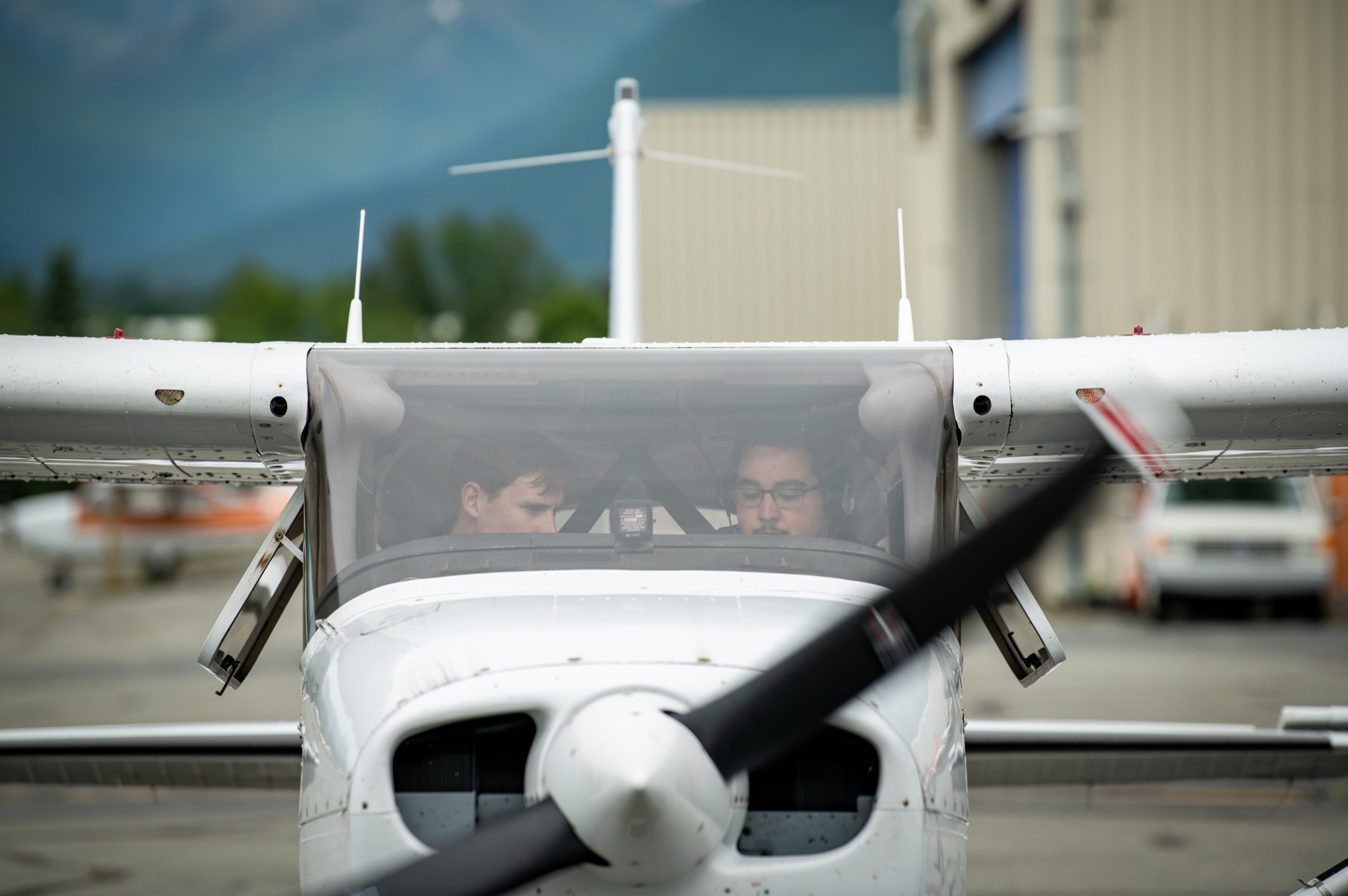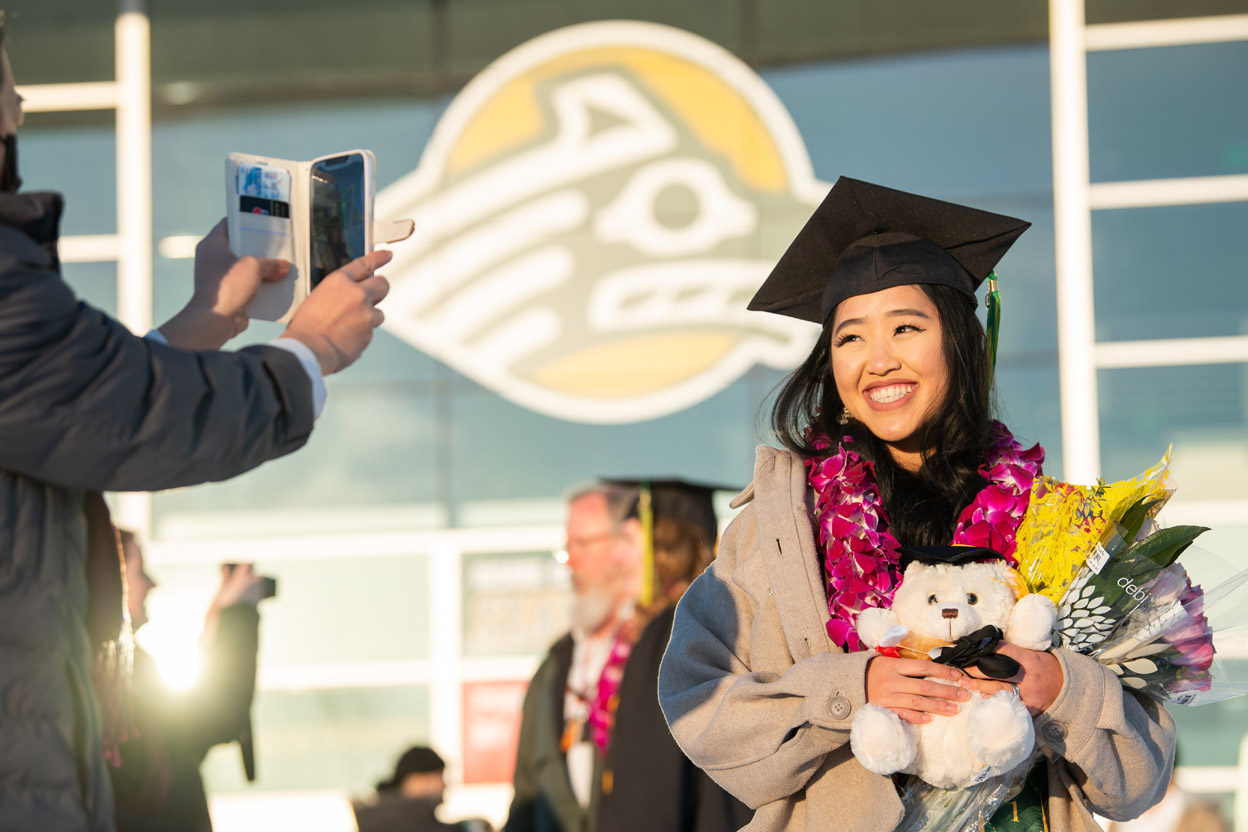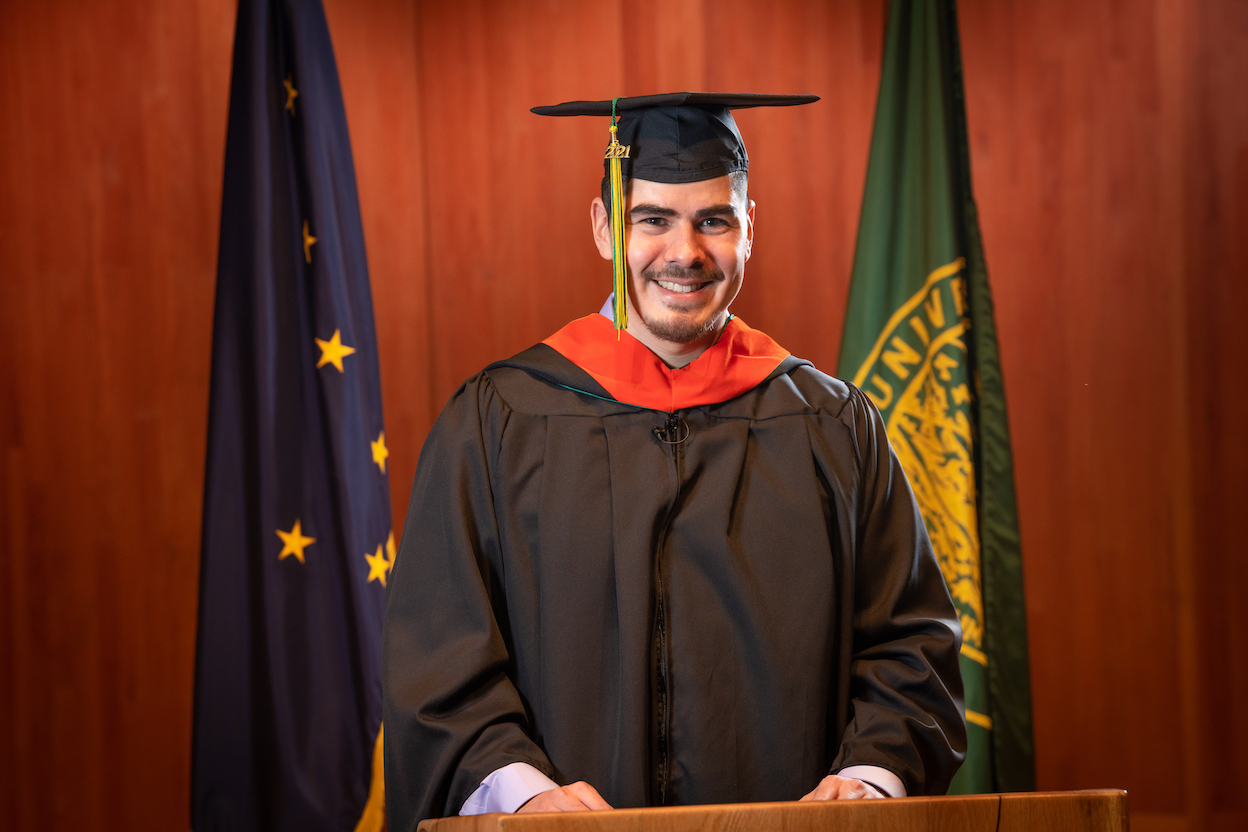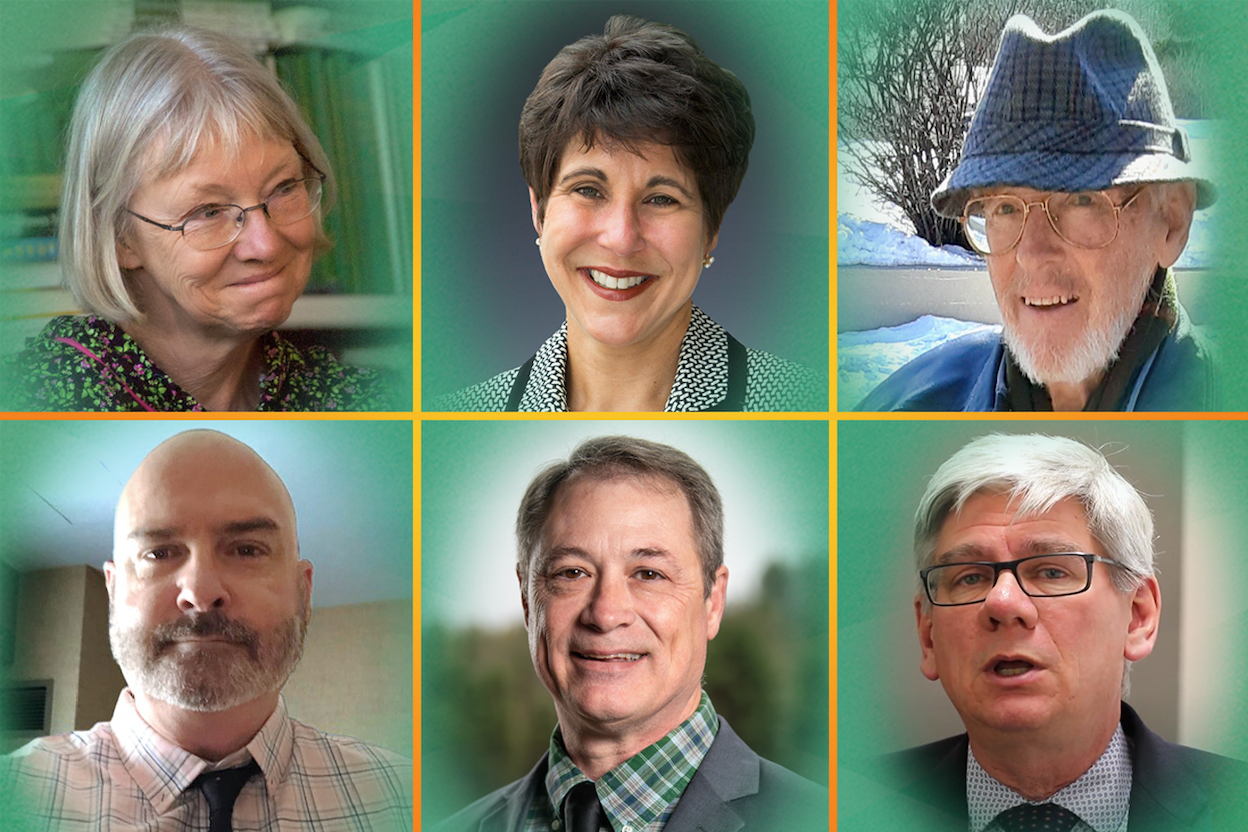A sky-high partnership
by Catalina Myers |

There are about 8,000 licensed pilots in Alaska, according to the Federal Aviation Administration (FAA) and by the beginning of the fall semester, that number will increase by four. The kicker? The four novice pilots are all under the age of 19.
In a state with more runways than highways, one could say that obtaining a pilot’s license is just as important as having a driver’s license. Now, thanks to a partnership between the University of Alaska Anchorage and the Anchorage School District (ASD), high school students attending King Tech High School in the Aviation Technology track can earn their piloting license through UAA’s Aviation Technology Division (ATD) within the Community Technical College (CTC).
The partnership aims to bridge the gap for teens in King Tech’s aviation track to make the leap (literally) from ground school training to the air at Merrill Field and earn their pilot’s license before the first bell rings of their senior year of high school. It’s a partnership that has been two years in the making and represents countless hours of coordinated efforts between the university and ASD.
“We’ve always had a really strong program in terms of numbers of students in our aviation technology pathway — which points them in the direction of becoming a commercial pilot — but very few students carry on beyond our program,” said Missy Fraze, Career Technical Education director of King Tech.
The biggest hurdle thus far has been the massive price tag for an individual to earn their private pilot’s license, somewhere in the ballpark of $14,000. According to Fraze, the expense is not something many students could afford and was quite literally grounding them when it came to completing the education required to earn their pilot’s license. Some students eventually secure the funds to complete their training, while others move on, either finishing their education out of state or never earning their license. In a state that relies heavily on the aviation industry to transport people, goods and services, it is worrisome, especially as older pilots already have or are about to retire. The state is on the brink of experiencing a massive pilot shortage and needs newly licensed pilots.
“There’s a critical workforce shortage in aviation — it was there before the pandemic started — but will be felt even more so after because a lot of pilots took early retirement,” Fraze said. “In Alaska, aviation is a huge industry both commercially and privately for connecting residents to our larger cities, towns and our rural communities.”
Fraze said connecting the dots for students in King Tech’s programs is extremely important for encouraging a particular career path. In other programs, students receive hands-on training when taking a course. With the aviation technology program, students complete their ground school training but miss the critical experience of actually flying a plane.
That’s where opportunity came knocking for both career tech schools. Ray Weber, interim dean of CTC, said many ATD students are busy with jobs during the summer months — meaning instructor's schedules are open and they can teach students how to fly. He said partnering with ASD’s King Tech aviation technology program made sense since ATD had the instructors, space and planes to fulfill the missing critical component in King Tech’s program. Additionally, it’s an opportunity to cultivate a relationship with potential future students and educate the next generation of Alaska pilots.
“In the summer, most of the time, our flight operations are lower,” said Weber. “We thought we should get the top high school students who have completed the ground school and see if they would be successful in obtaining their license in the abbreviated summer months. It’s taken many years of effort and we’re excited to have the first four this summer.”
Fraze said the goal is that students would complete this program the summer between their junior and senior year of high school. During their junior year, they would receive their ground school education at King Tech High School and during the summer, they would complete the required flying hours to earn their pilot’s license in the early fall before their senior year began. In addition to receiving their pilot’s license, the high school students would receive dual credits for both high school and college, giving them an edge once they graduate.
“I think what is really great about this, is that right out of high school, they’re getting college credits and they are already plugged into UAA’s program,” said John Fick, aviation technology instructor at King Tech. “It’s really a win-win for everybody.”
For the four high school students embarking on the task of earning their pilot’s license, it’s a rigorous few months filled with early mornings and lots of studying. The curriculum is fast-paced and requires four to five days a week of 90-minute to two-hour flying sessions. Students work on basics like plane safety checks, mastering maneuvers like take-off and landing, and talk on the radio to more complex scenarios like navigating turbulence, bad weather, or engine loss. By the end of the summer, all four students are required to pass a “cross-country” test, a 50-mile solo flight, before being granted their pilot’s license. It’s a monumental amount of work, especially for students who are so young. By the end of the summer, each of these four students will have earned their pilot’s license before heading into their senior year.
“That is the one thing with aviation, it is humbling,” said Dane Leary, aviation instructor with ATD who’s been working with the high school students this summer. “There is a lot of skill that is required, a lot of planning and studying required to complete this program. I’m very proud of the high school students, they’ve put a lot of work and dedication into this so far and you can see it.”
While this summer’s cohort is small, Fraze and Weber said there are plans to expand to a larger group, although most likely no more than ten. It’s an exciting partnership and Fraze is thrilled that her aviation technology students now have the opportunity to gain hands-on experience and learn how to fly.
“This program is so huge because it tells our students that they don’t have to leave to get the training for the career they want,” said Fraze. “As two of the largest institutions in the state, I think continuing these conversations about creating partnerships will better help prepare our students in the future.”
 "A sky-high partnership" is licensed under a Creative Commons Attribution-NonCommercial 4.0 International License.
"A sky-high partnership" is licensed under a Creative Commons Attribution-NonCommercial 4.0 International License.













